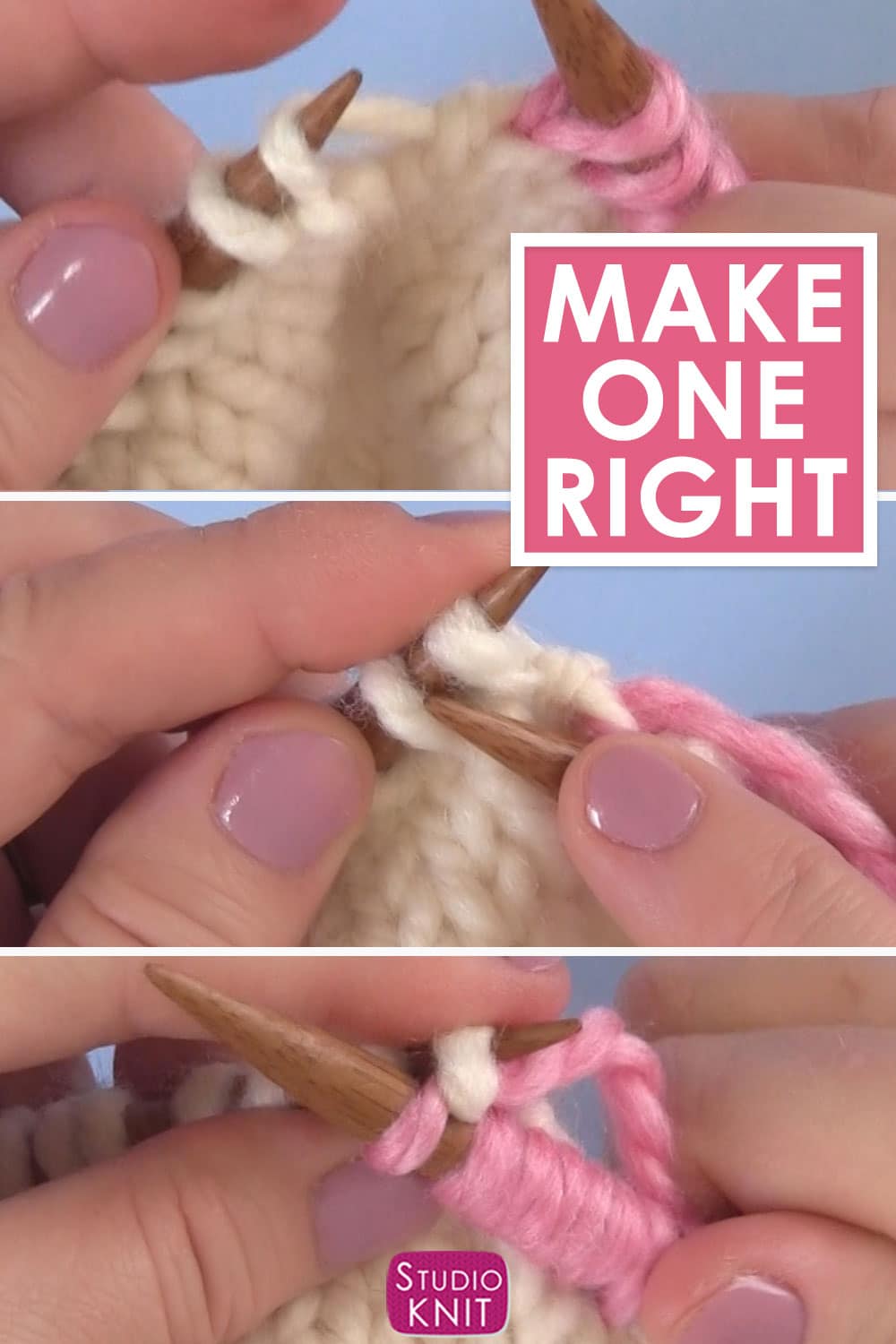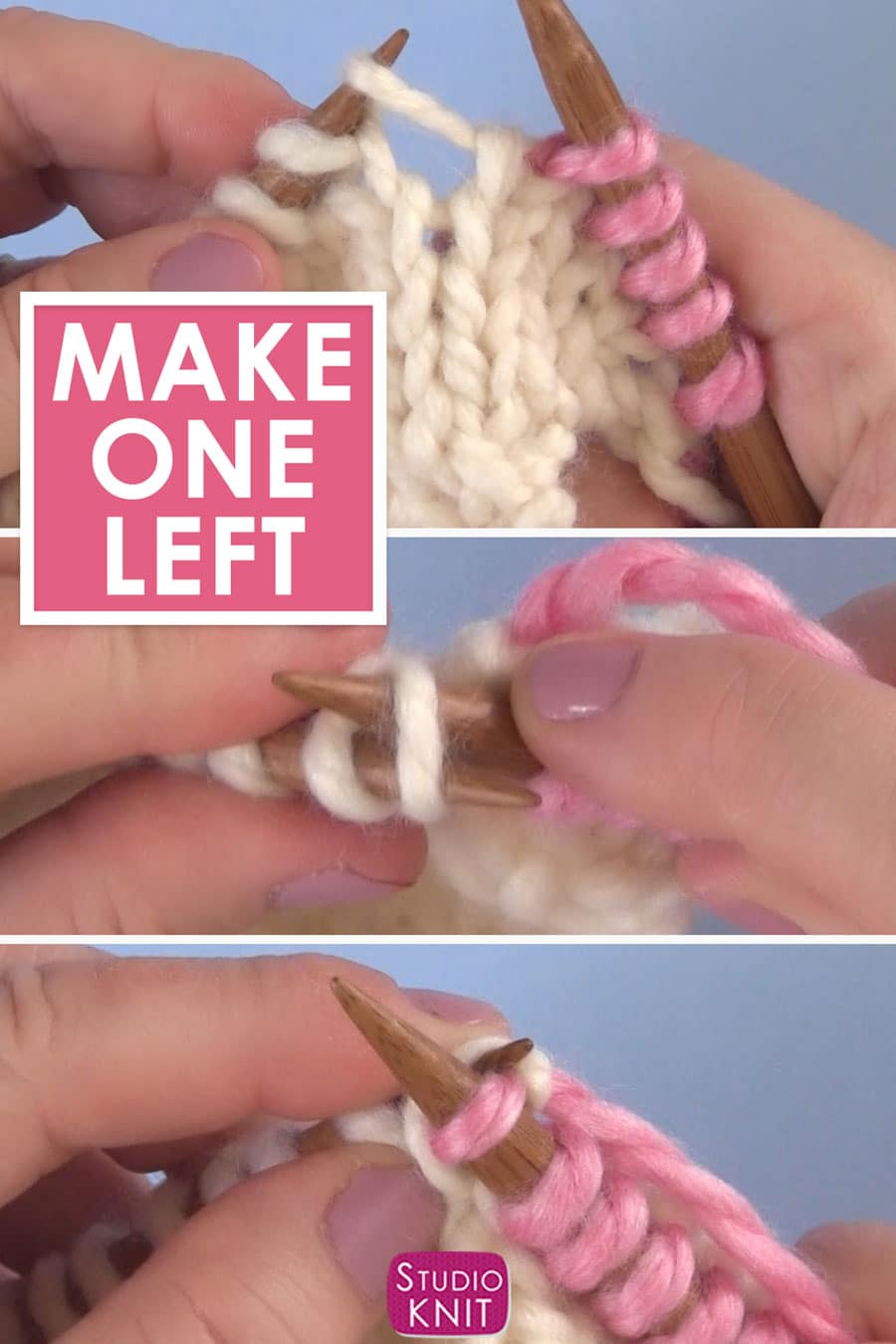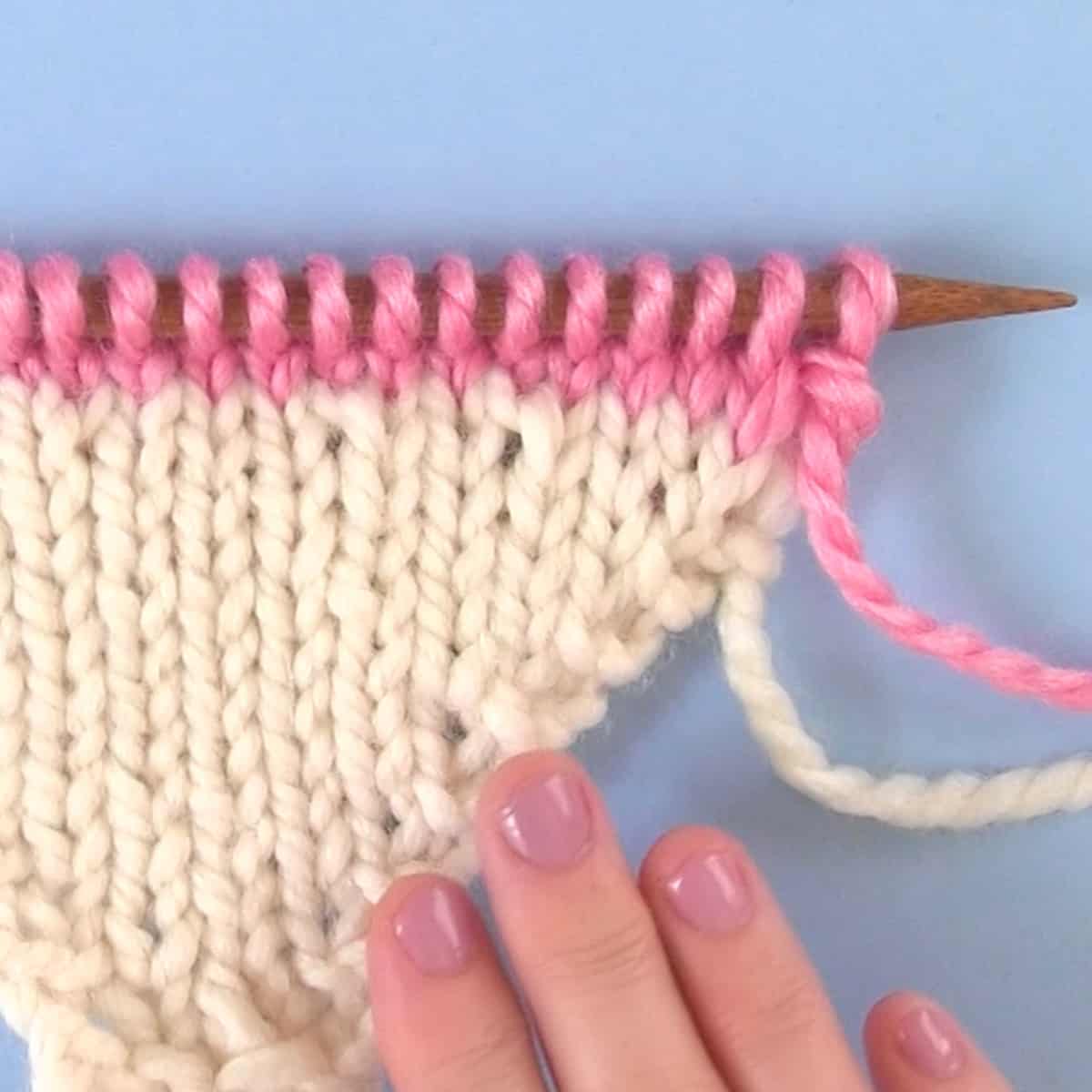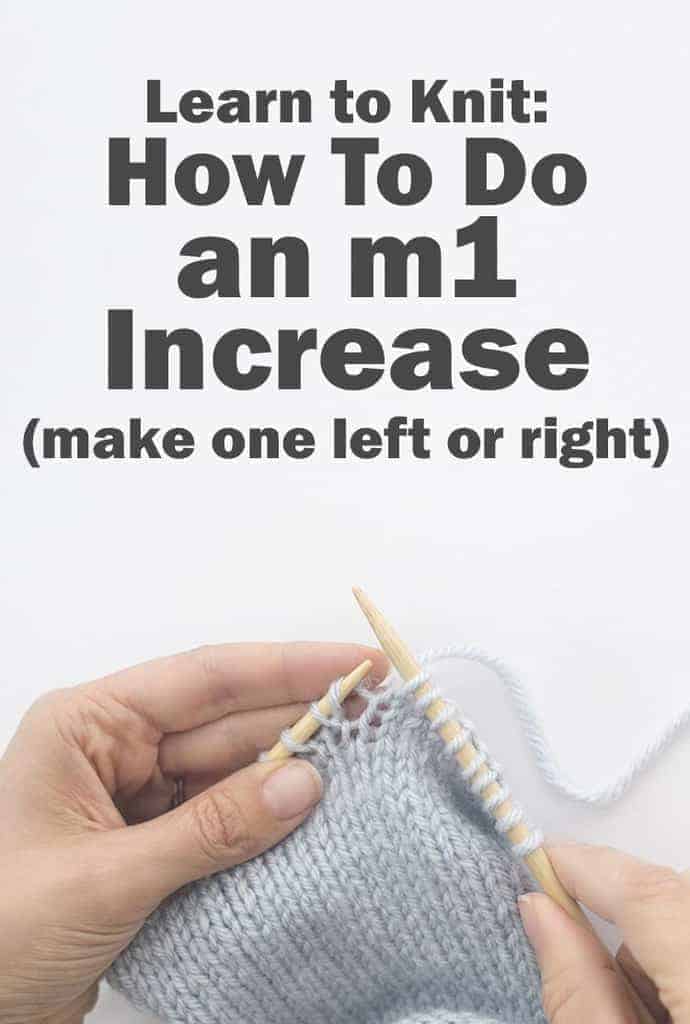Knitting Make 1
Knitting Make 1 - It is important to make the new stitch twisted if you do not want. Web what is a make one, m1, anyways? It is less noticiable than knitting into the front and back of a stitch. Knit the next stitch on your main needle. The most basic way to increase is knitting in. 1.2m views 13 years ago. It’s created by working into the strand in between the stitch just worked and the next stitch. I am using the schachenmayr catania grande in this tutorial. “m1r,” as you can reasonably assume, stands for “make 1 right,” and leans rightward. Make 1 or m1 is a generic way to say ‘create one new stitch’. It’s a very neat looking increase that basically appears magically between two existing stitches. To get more stitches in knitting, an increase is needed. It’s often abbreviated in knitting patterns as m1. Slip the loop onto your working needle and release the yarn from your thumb, tightening it onto the needle. These right and left leaning increases add a stitch. The biggest difference lies in the way you knit that extra loop. “m1r,” as you can reasonably assume, stands for “make 1 right,” and leans rightward. Web make one left or make one right are simply single increases knit into the horizontal yarn between two existing stitches. There are many different methods that you can choose from, and you should. To get more stitches in knitting, an increase is needed. M1, m1l, m1r, m1p, m1pl, m1pr. You can switch up the heels. Here are 5 tips to help you make the right choice. 1 perhaps the most important thing is that your yarn is washable. This increase is called a make 1, because you make a stitch by itself, instead of using a previous stitch. “m1r,” as you can reasonably assume, stands for “make 1 right,” and leans rightward. To get more stitches in knitting, an increase is needed. Each one looks a little bit different in your work. Here are 5 tips to help. Web make one left or make one right are simply single increases knit into the horizontal yarn between two existing stitches. Locate the strand that runs horizontally between your two needles. Going in through the front, insert your right needle under the horizontal strand. One form of increasing in knitting is to work into the strand between two stitches. The. Babies are messy, to say the least, and you want your project to go the distance, so washability is crucial. “m1r,” as you can reasonably assume, stands for “make 1 right,” and leans rightward. Going in through the front, insert your right needle under the horizontal strand. This content is protected by copyright. They are both knitted in a very. By following the instructions, you can increase your stitch count by one and this will make your project get wider. It is less noticiable than knitting into the front and back of a stitch. Web to make one (m1), pick up the bar between two stitches and knit into it. Depending on which way you pick it up, you either. It’s created by working into the strand in between the stitch just worked and the next stitch. There are many different methods that you can choose from, and you should pick the one you prefer. 51k views 9 years ago 😀super easy ways to increase knitting!! Web the make one is a commonly used knitting increase, but there are 6. It’s a very neat looking increase that basically appears magically between two existing stitches. You’ll notice that this increase is the same as a make one left (m1l) increase. It’s created by working into the strand in between the stitch just worked and the next stitch. They are both knitted in a very similar way. 21k views 6 years ago. It’s often abbreviated in knitting patterns as m1. Web yes, just as the name states—you make one. Learn how to increase 1 stitch by picking up the horizontal loop before next stitch and. “m1r,” as you can reasonably assume, stands for “make 1 right,” and leans rightward. 10k views 1 year ago knitting increases. M1, m1l, m1r, m1p, m1pl, m1pr. These increases are mirror images of each other, as one leans to the left and the other to the right. Web with a cropped top. Take the working yarn and wrap your thumb around it, rolling your thumb over and towards you, creating a loop. Locate the strand that runs horizontally between your two needles. 10k views 1 year ago knitting increases. Make 1 is the most invisible increase in knitting. The biggest difference lies in the way you knit that extra loop. The most basic way to increase is knitting in. 21k views 6 years ago my knitting tutorials. Learn how to work the make 1 right (m1r) and make 1 left (m1l) increases. Knitting these increases is simple enough for even beginners to master easily. Web yes, just as the name states—you make one. 1.2m views 13 years ago. To get more stitches in knitting, an increase is needed. They are both knitted in a very similar way./M1_4-5ad10f1418ba010037438ea3.jpg)
How to Increase Stitches with Make One (M1) in Knitting
![M1L Knitting & M1R Knitting Increases [2 Easy Techniques]](https://knitting.com/wp-content/uploads/2023/01/IMG_1121-1024x1024.jpg)
M1L Knitting & M1R Knitting Increases [2 Easy Techniques]

How to knit make one M1 YouTube

Make One Knitting Increase (M1, M1L, M1R) Studio Knit

Make One Knitting Increase (M1, M1L, M1R) Studio Knit

Make One Knitting Increase (M1, M1L, M1R) Studio Knit

Learn to Knit Make One (m1) Little Red Window

Make One Left (M1L) Quick 1 Minute Knitting Tutorial YouTube

Make One Right (M1R) Quick 1 Minute Knitting Tutorial YouTube

How to knit Make one Left (M1L) for beginners step by step tutorial
Lift The Horizontal Strand With Your Right Needle.
I Am Using The Schachenmayr Catania Grande In This Tutorial.
Make One Increases Are Created By Working Into The Strand In Between Two Stitches On Your Knitting Needles.
Web The Make One Is An Increase That Has The New Stitch Coming Out To The Left Of The Old Stitch.
Related Post: